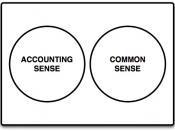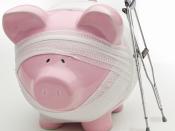Term 1 Week 4 Sam Hill 12S1
Economics - Extended Response
Discuss the economic implications for the Australian economy of Australia's continuing current account deficits.
The current account records all transactions between Australia and the global economy. Along with the capital and financial account, it makes up the balance of payments which records all transactions of Australian residents with the rest of the world. When the two accounts are added together (net errors and emissions included) they must total zero under a floating exchange rate. A current account deficit (CAD) occurs when the money flows of export receipts, service credits, inflowing income and current transfers are less than the money flows of import payments, service debits and outflowing income and current transfers overseas. Hence, if total debits are greater than total credits, there is a CAD. Australia runs a large CAD annually and must finance this with an equivalent surplus in the capital and financial account.
To understand the implications of Australia's continuing CAD on the domestic economy, one must first understand and examine the components and the causes of the current account.
The components of the current account are goods, services, net primary and net secondary income. Goods credits (exports) are divided into rural and non-rural, whilst goods debits (imports) are classified as consumption, capital and intermediate goods. Services credits (exports) and debits (imports) include tourism, travel, education, insurance, transport and finance. Net primary income refers to credits minus debits of income received and paid, mainly to service Australia's foreign liabilities. These include dividends, interest, profits and rent. Net secondary income refers to credits minus debits associated with government transfers (emergency foreign aid), personal transfers of migrants (pensions), workers' remittances of wages, and insurance claims.
The Australian economy ran persistent current account deficits varying from -3.2% to -6.3%...


